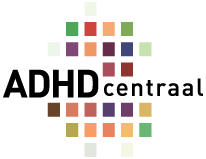DSM
When you are diagnosed with ADHD, you naturally want to know what that diagnosis is based on. The Diagnostic and Statistical Manual of Mental Disorders (DSM) is the manual for diagnosis and statistics of mental disorders that serves as the standard in international psychiatric diagnosis.
DSM was created to end international speech confusion in the literature on psychiatric disorders. Depression, psychosis or ADHD were interpreted differently by different authors and were often different by country. DSM brought unity to diagnoses. All symptoms were clearly described and it was defined exactly which symptoms can occur in which disease and how many symptoms must be present before a patient can be said to have a particular disease.
Read the ADHD criteria here
DSM-5 criteria ADHD
A. A persistent pattern of inattention and/or hyperactivity-impulsivity that is
Interferes with functioning or development, as characterized by (1) and/or (2).
(1) Inattention
Six (or more) of the following symptoms have been present for at least six months to an extent that is inappropriate and adversely affects social, school or occupational activities and is not developmentally appropriate.
Note: Symptoms are not just a manifestation of oppositional behavior, defiance, hostility or an inability to understand tasks or instructions. Adults must meet at least five symptoms. The individual:
- Often fails to pay adequate attention to details or carelessly makes mistakes in schoolwork, work or in other activities
- Often has difficulty keeping attention on tasks or play
Often does not seem to listen when addressed directly - Frequently does not follow directions and often fails to complete schoolwork, chores or fulfill obligations at work (not the result ofopposition behavior or inability to understand directions)
- Often has difficulty organizing tasks and activities
Often avoids, dislikes or is unwilling to engage in tasks that require sustained mental effort (such as school or homework) - Often loses things needed for tasks or activities (e.g., toys, homework, pencils, books or tools)
- Is often easily distracted by external stimuli
- Is often forgetful in daily activities
(2) Hyperactivity and impulsivity
Six (or more) of the following symptoms have been present for at least six months to an extent that is inappropriate and adversely affects social, school or occupational activities and is not developmentally appropriate.
Note: Symptoms are not just a manifestation of oppositional behavior, defiance, hostility or an inability to understand tasks or instructions. Adults must meet at least five symptoms. The individual:
- Often moves hands or feet restlessly, or twists in his/her chair
Often stands up in class or other situations where one is expected to remain seated - Often runs around or climbs on everything in situations where it is inappropriate (in adolescents or adults this may be limited to subjective feelings of restlessness)
- Has difficulty playing quietly or engaging in relaxing activities
- Is often “busy” or “trotting along
- Often talks at a stretch
- Often throws out the answer before the questions are finished
- Often has difficulty waiting his/her turn
- Often disrupts activities of others or intrudes (e.g., interferes casually in conversations or games)
B. Some symptoms of hyperactivity-impulsivity or inattention causing impairment were present before age 12.
C. Some impairments from the group of symptoms are present in two or more areas (for example, at school (or work) and at home).
D. There must be clear evidence of significant limitations in social, school or professional functioning.
E. The symptoms do not occur exclusively in the course of a pervasive developmental disorder, schizophrenia, or other psychotic disorder and are not previously attributable to another mental disorder (e.g., mood disorder, anxiety disorder, dissociative disorder, or personality disorder).
DSM-5 distinguishes three subtypes of ADHD:
314.01 Combined image
If during the past six months both criteria A1 (inattention) and A2 (hyperactivity-impulsivity) are met.
314.00 predominantly inattentive image
If during the past six months criterion A1 is met but not criterion A2.
314.01 Predominantly hyperactive-impulsive image
If during the past six months criterion A2 but not criterion A1 is met.
Partially in remission
If all criteria were initially met, but less than all criteria have been met over the past six months and symptoms continue to cause impairment in social, school or occupational functioning.
Current severity
DSM 5 specifies current severity:
Light
No or few more symptoms than those required to assign the classification are present, and the symptoms result in only mild limitations in social, school or occupational functioning.
Moderate
Symptoms or functional limitations between “mild” and “severe” are present.
Seriously
Many more symptoms than required to assign the classification are present, or several particularly severe symptoms are present, or the symptoms result in marked limitations in social, school or occupational functioning.
You may have suspected
Have ADHD or ADD?
The self-test gives a first impression. ADHDcentraal is happy to investigate further with you. At ADHDcentraal, you can choose diagnostics only or diagnostics and treatment.
